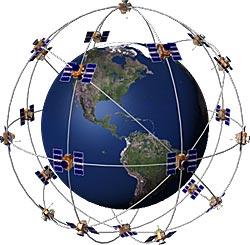The Basic Working Principle of the GPS
For our early ancestors, keeping track of their way was a matter of life and death. If one was lost they would be prey to predators of the night. This led to keeping landmarks, be it as simple as sticks or creating maps of stars so they could find their way in the night. As time went by, maps expanded, the compass was invented trade began across continents and so on. But there always was the tough task of navigating across a landscape.
The miracle called technology:
It’s no understatement calling this technology a miracle, a pocket size device that can pin point its location anywhere on earth. Simply known as a GPS (Global Positioning System), it’s the modern world’s answer to the compass.
The concept:
To state it simply the GPS is actually a receiver which is in sync with the 27 Earth-orbiting satellites.
Each satellite circles the globe at about 12,000 miles (19,300 km), every day (making two complete rotations of the earth’s diameter). The paths of the satellites are programed in such a way that there are at least four satellites visible in the sky at any given time and place on earth.
What a GPS receiver does is locate the four or more satellites and find out the distance between each one of them. Using this information the GPS tracking system in our car or other devices finds out its current location. The information is presented as maps, latitude and longitude specification etc.
Although first developed basically as a U.S. military navigation system it was later open to the end user. Today with a GPS car tracking system we are at a point where it’s impossible to get lost.
Shenzhen Eelink Communication Technology Co., Ltd is top notch GPS tracker manufacturer.

